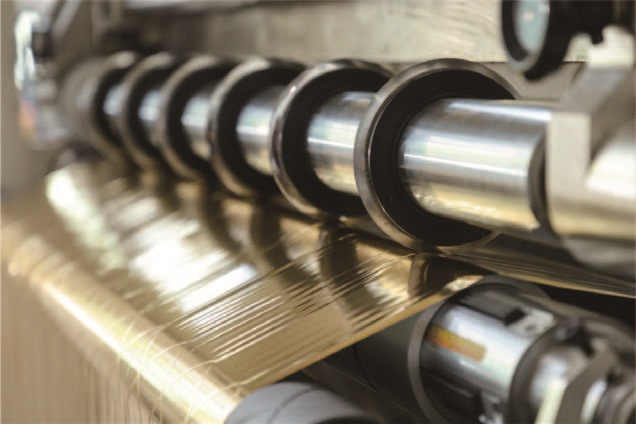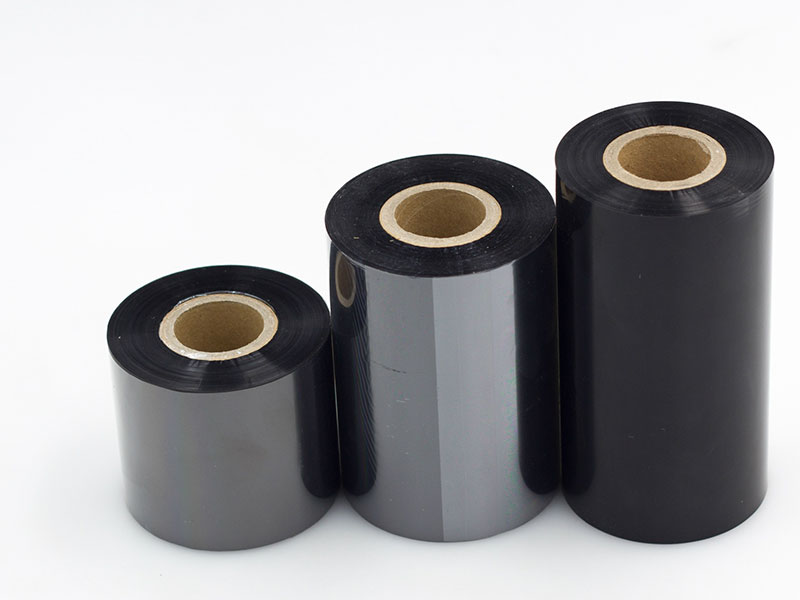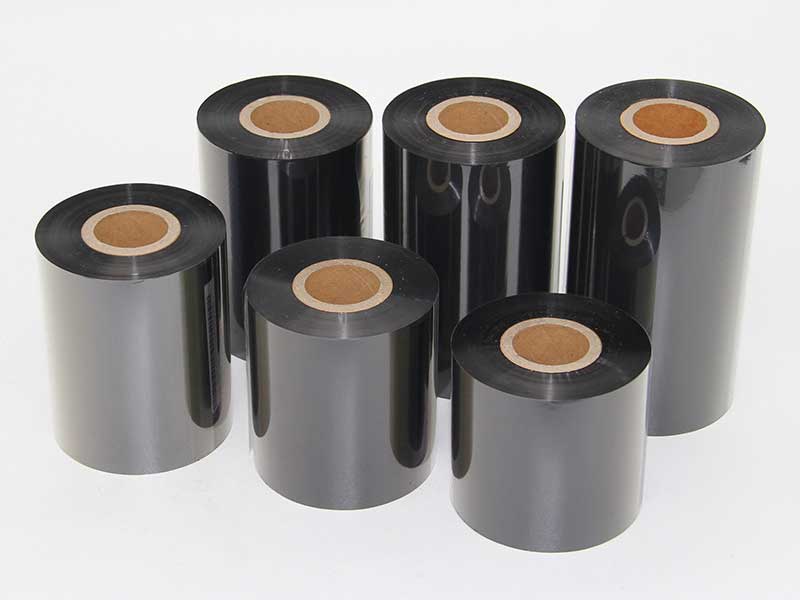To achieve full automation from slitting to rewinding, reduce manual intervention and increase production capacity, it is necessary to promote from the three dimensions of equipment intelligence, process optimization and system integration. The following are the specific implementation plans and key technical points:
1. Automated upgrade at the hardware level
1. Intelligent slitting system
• Automatic tool change technology:
◦ Equipped with a tool magazine system (10-20 kinds of tools can be stored), the round/flat knife can be automatically changed through the robotic arm to adapt to different materials (such as ultrasonic knife for PE soft film, diamond coated knife for PET hard film).
◦ Tool wear monitoring: The laser sensor detects the state of the cutting edge in real time, and automatically alarms and switches the spare tool when the wear exceeds the limit.
• Visually Guided Slitting:
◦ The high-precision CCD camera identifies printing marks/material defects, and automatically adjusts the slitting position (accuracy ±0.05mm) to avoid manual calibration errors.
2. Fully automatic winding system
• Unmanned roll change:
◦ Double-station winder + automatic shuttle: automatically switch the empty core after the full wind, and at the same time transport the finished roll to the buffer area (roll change time< 15 seconds).
◦ Inflatable shaft + manipulator collaboration: automatically clamp/release the core to avoid damage to the core caused by manual knocking.
• Intelligent Tension Control:
◦ Closed-loop control of magnetic particle brake + tension sensor, dynamically adjusted according to material characteristics (such as PE film low tension 5N, PET film high tension 20N) to prevent loose winding or core bursting.
3. Automatic flow of materials
• AGV/RGV Logistics System:
◦ Parent coil feeding: AGV automatically handles 1-3 tons of mother coil to the slitting machine station, and the laser positioning accuracy is ±1mm.
◦ Finished product blanking: After automatic labeling and lamination, RGV will send the coil to the three-dimensional warehouse (30-40 rolls per hour).

2. Intelligent control of the software system
1. Central control platform
• Recipe Management System:
◦ Pre-stored 1000+ process parameters (such as slitting speed, tension curve), scan the code to retrieve the formula (such as PET aluminized film - 0.2mm thickness scheme), and the switching time < 30 seconds.
• Adaptive Optimization Algorithm:
◦ Automatically optimize the slitting path based on historical data (such as prioritizing the removal of 5cm low-quality areas on the edge of the parent roll) to improve the material utilization rate by 3%-5%.
2. Predictive maintenance
• IoT device health monitoring:
◦ The vibration sensor monitors the status of the spindle bearing, and the temperature sensor monitors the temperature rise of the motor, giving early warning of potential faults 7 days in advance.
◦ Tool life prediction model: Calculate the remaining life according to the number of slitting meters and material hardness, with an accuracy of >90%.
3. Digital twin simulation
• Virtual Commissioning:
◦ Simulate the slitting process (e.g., ultra-thin PP film slitting) in the digital twin system to verify the feasibility of parameters in advance and reduce the loss of physical test machine.
3. Unmanned connection of the process chain
1. Front-end process integration
• On-line detection linkage:
◦ After the film produced by the upstream extruder passes through the defect detector, the data is synchronized to the slitting machine in real time, and the defect location is automatically marked and slitting is avoided.
• Width Match Optimization:
◦ Intelligently calculate the optimal slitting scheme according to the width of the parent roll (e.g., 8×250mm for 2000mm master coil) to reduce waste edge (<1%).
2. Direct connection of the subsequent process
• Automatic Packing Line:
◦ After slitting and rewinding, it is automatically bagged, heat shrink wrapping (speed 20 rolls/min), and RFID tags with production batch numbers are pasted.
• MES system docking:
◦ Automatically upload slitting length and quality data to MES to realize the traceability of the whole process of production, warehousing and delivery.

4. The key benefits of comparison
| index | Traditional semi-automatic production line | Fully automatic production line | Lift |
| Frequency of manual intervention | 2-3 reps per roll | 1 time every 10 rolls (exception handling only) | 90%↓ |
| Capacity (PP film as an example) | 600m/min | 1200m/min | 100%↑ |
| Changeover time | 30 minutes | 2 minutes | 93%↓ |
| Defective product rate | 1.2% | 0.3% | 75%↓ |
5. Implementation difficulties and solutions
1. Material adaptability challenges
◦ Problem: PE film has high ductility and easy stretching, while PET film is brittle and easy to crack.
◦ Solution: Develop a material database to automatically match the slitting parameters (e.g., PE film is reduced by 20%, PET film is preheated to 50°C).
2. High-precision requirements
◦ Problem: Electronic grade PET film requires slitting burrs < 5 μm.
◦ Solution: low-temperature plasma cutting + online burr detector, real-time feedback adjustment.
3. High initial investment costs
◦ Solution: Phased transformation (automatic winding first, then slitting system), the payback period can be shortened to 1.5 years.

6. Industry benchmark cases
• A lithium battery separator factory:
Through the automatic slitting and winding system, 24-hour unmanned production is realized, the daily production capacity of a single machine is increased to 50km, and the fluctuation of product thickness is controlled within ±1μm.
• Food packaging film enterprises:
The integrated automatic weighing/labeling system reduces the packaging time from 3 minutes to 20 seconds per roll, reducing labor costs by 70%.
summary
The core of fully automated slitting-winding is to build a closed-loop system of "intelligent perception-autonomous decision-making-precise execution". The future direction will focus on:
• AI real-time optimization: Dynamically adjust the process with deep learning (e.g., the slitting speed automatically adjusts with the change of film thickness).
• Modular expansion: Compatible with more functions (such as slitting-printing-compounding integrated equipment) to further reduce the turnaround between processes.
Enterprises need to choose the appropriate solution according to their own material characteristics (such as whether they need a dust-free environment) and capacity requirements (high speed vs. high precision), and cultivate a composite operation and maintenance team to cope with the complexity of the automation system.

Finding the reliable way to industrial ribbon slitting machines is a comprehensive practice of precision engineering, intelligent control and system optimization.
02. January, 2026
By mastering these three forces, you will master the weapon to cut out a brilliant future in the fierce competition.
02. January, 2026
A high-quality ribbon slitting machine must achieve a precise balance in multiple technical dimensions to achieve excellent performance of "stable and non-cassette".
02. January, 2026
Every millimeter of precise slitting, every technological breakthrough, silently speaks of the brand's persistent pursuit of perfection.
31. December, 2025
The traditional large-scale standardized production model is gradually transforming into a customized direction with small batches, multiple specifications, and fast delivery.
31. December, 2025